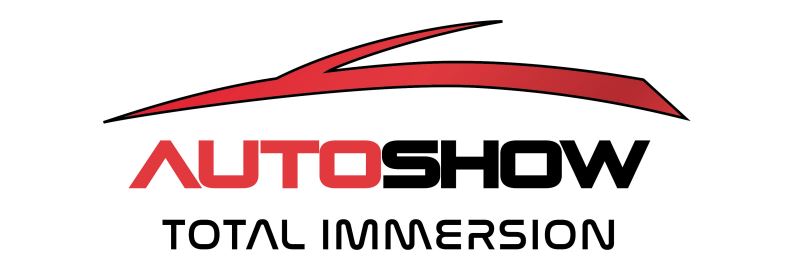
Like other auto shows, the Canadian International Auto Show (CIAS) was cancelled in 2021 and 2022 because of the restrictions related to COVID 19 but resumed in 2023. Several makers stopped attending auto shows completely, but some have returned as they came to realize that if consumers don’t see a brand at the show, they may not put it on their vehicle shortlists. German luxury brands Audi, BMW and Mercedes-Benz returned to the CIAS this year but mainstream brands Honda, Mazda and Volkswagen were still absent.
While consumers are embracing car shows enthusiastically, carmakers prefer to unveil their vehicles to invited journalists at special launch events. Before Covid, car show media days were heavily-scheduled affairs with back-to-back, formal reveals of new vehicles. This year, only a few new vehicles were formally introduced during the 2025 CIAS Media Day.
Consumers still find car shows compelling and over 371,000 people attended last year’s CIAS. Organizers hoped attendance this year would match or exceed 2024, but back-to-back snowstorms over the Family Day long weekend reduced attendance.
Although there was no formal presentation relating to the increasing unaffordability of new cars, the potential for U.S. tariffs to profoundly disrupt the vehicle market and the disappearance of subsidies for electric and plug-in electric vehicles, they were constant topics of the private conversations among attendees at the Media Day.
AJAC Car and Utility of the Year awards

Stephen Elmer and Evan Williams announce the Car of the Year and Utility of the Year winners
The Automobile Journalists of Canada (AJAC) Vehicle of the Year awards follow an unusual format that picks Car and Utility of the Year for conventional powertrains with parallel awards for electric cars (including PHEVs).
The awards are compiled from votes cast by AJAC members based on road tests during the year, as well as opinions formed during vehicle evaluations at the AJAC TestFest that takes place in October.
The votes are tabulated by accounting firm KPMG and sealed envelopes are opened at the CIAS to reveal the winners. For vehicles with conventional powertrains, the winners were the Honda Civic for Car of the Year, and the Hyundai Santa Fe for Utility of the Year. For electric vehicles, the winners were the BMW i4 for Electric Car of the Year and the Hyundai Ioniq5 N for Electric Utility of the Year.
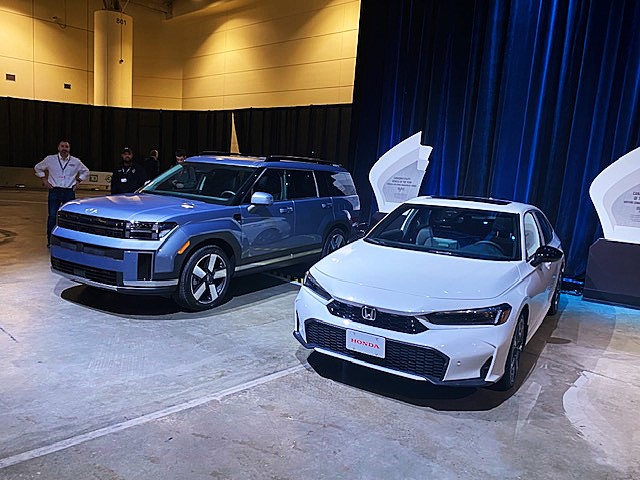
The Honda Civic and Hyundai Santa Fe were the conventionally-powered Car and Utility of the Year winners for 2025
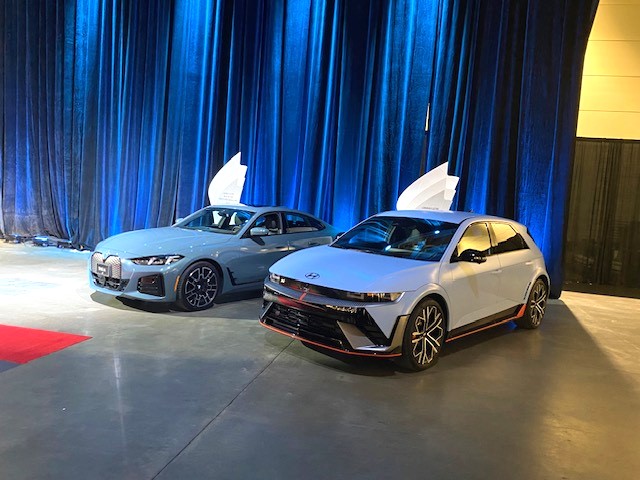
The BMW i4 and the Hyundai Ioniq 5 N were the electric Car and Utility of the Year winners
Electric car test track
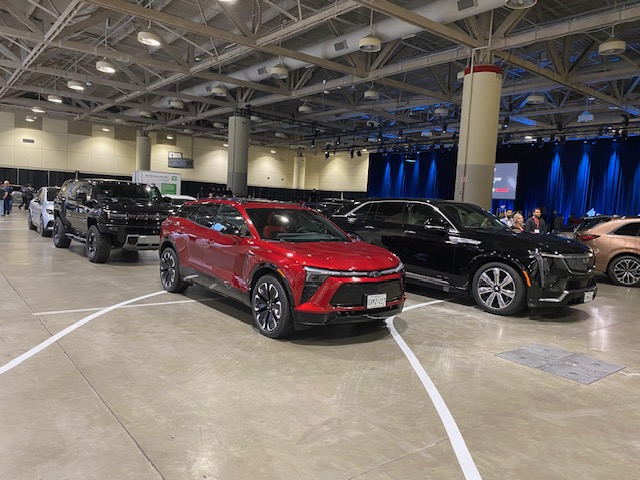
An indoor test track allowed showgoers to experience electrical propulsion
T-REX RR Three-Wheeler
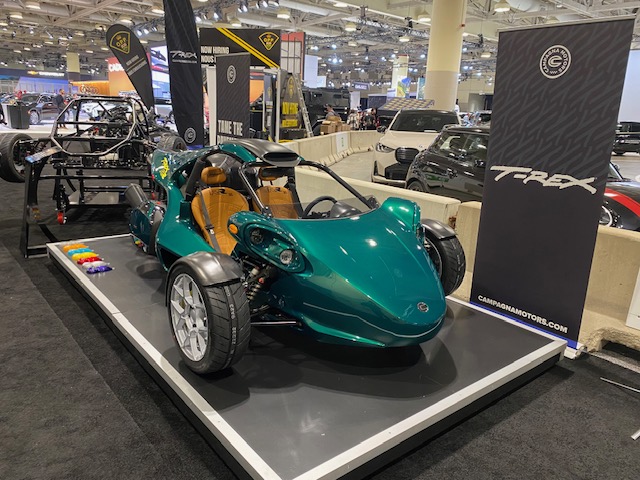
Campangna T-Rex three-wheeler
Made by Quebec-based Compagna Motors, the T-Rex RR three-wheeler was on display at the CIAS.
The T-Rex is powered by a 208 horsepower, 1441 c.c. Kawasaki engine. Power flows to the rear wheel via a six-speed sequential gearbox. With a weight of just 498 kilograms, acceleration is phenomenal with a 0-96 km/h time of just 3.9 seconds.
Audi Q5 and A5
Audi allowed its models to become quite dated over the past few years but has made amends by replacing two key models. Both are built on what Audi refer to as a Premium Combustion Platform.
Q5
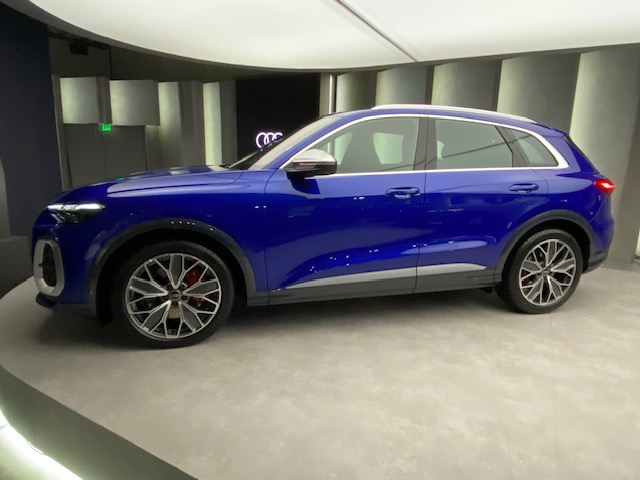
Audi’s best-seller, the Q5, broke cover in high- performance SQ5 guise at the Toronto show. It was one of just a few formal launches of the day.
The Q5 reflects a new direction for Audi, moving away from the form that debuted for 2007 and was updated for 2018. The new-generation Q5 trades the frumpy lines of the 2018 update for a fresh, contemporary design. Cabin impressions are not available as the interior was not accessible.
Power stems from the familiar 2L turbo four that is rated at 268 horsepower, seven more than previously. The new Q5 lacks the mild hybrid system and 48-volt electrical system of its predecessor. The high-performance SQ5 variant is powered by the same 3L turbo V6 used before; it produces 362 horsepower, 13 more than previously. Power reaches all wheels via a seven-speed, dual-clutch automated manual transmission regardless of engine.
Confusingly, both the old and new-generations of the Q5 will be sold as 2025 models. Orders for the new Q5 are being taken now.
A5
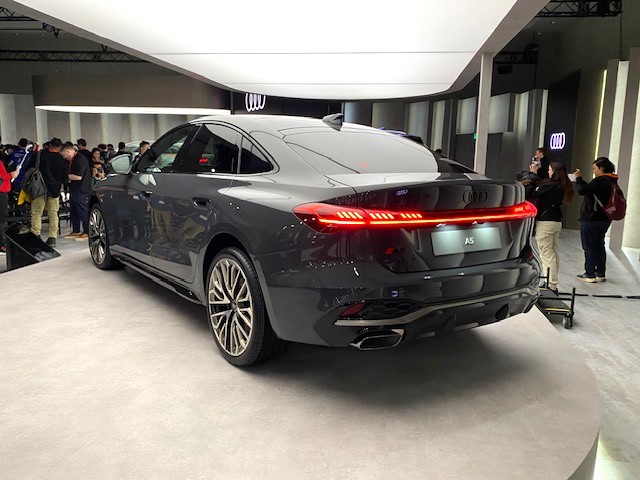
The new Audi A5 consolidates the A4 and A5 lineups for 2025
The A4 and A5 were built on the same platform and suffered some unnecessary market overlap. Only a five-door hatchback has been shown so far for Canada, but a station wagon is offered in other markets and a coupe is likely to follow. The same engines as the Q5, a 2L turbo four and a turbo V6, are offered.
In a move that is certain to create confusion in the future, two generations of the A5 will be sold as 2025 models.
Tesla Y update
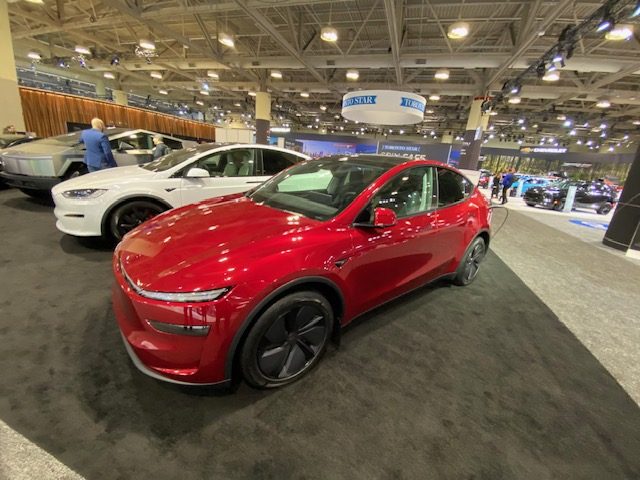
New front styling distances the Y from its platform mate, the 3
Tesla has finally updated the Model Y after five years on the market. Obvious external changes include a new front end with a full-width lightbar and new headlights, all mounted within a crisply faceted front fascia that is very different from the rounded form it replaces. The updated front end also visually distances the Y from the 3 it is derived from. The rear, with a full-width lightbar and squarer lines, follows the same themes as the front end. The lightbar is a single piece, full-width moulding, and the light you see is actually projected from above. The tailgate now features hands-free operation. Various aerodynamic tweaks on the updated Y have reduced the co-efficient of drag down to .22, an extraordinary figure for a mainstream production car.
The cabin has been comprehensively revised with a restyled dash, door panels and seats. New features include ambient lighting, ventilated seats, power-fold second row seats and a second-row infotainment console. Tesla notes the audio system has been updated as well. The large dash centre screen has been retained.
The structure of the Y has been enhanced, imparting a more solid feel, and acoustic glass has reduced wind noise. Revised suspension has improved ride quality, a failing of the previous version of the vehicle.
Currently, the updated Y is offered in a single “Launch” edition trim with a dual-motor all-wheel drive system delivering 458 horsepower and 526 kilometers of range.
Cars ordered now are scheduled for March delivery. With the price set at a massive $84,900, the Launch Edition is at a price point where many existing Y owners will be unable or unwilling to replace their current cars with another Tesla.
Tesla Robotaxi
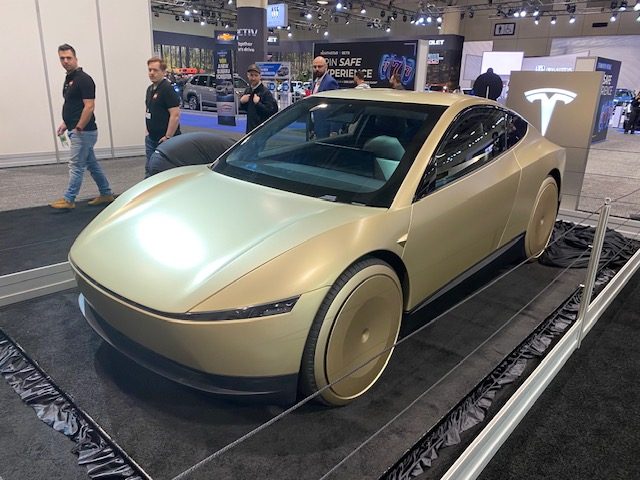
Tesla’s Robotaxi will seat two when it enters service later this year
Tesla displayed a prototype of its upcoming Robotaxi. The vehicle is meant to drive in a totally autonomous fashion. The cabin will welcome two occupants and have no steering wheel or pedals. The Robotaxi is slated to be powered by a 35 kWh battery pack reported to have up to 320 kilometers of range. The Robotaxi has no charging cable; it will use inductive charging to recharge the battery pack.
Tesla claims the Robotaxi will be in use by the summer of 2025. It will join other autonomous vehicle pilot programs like Google’s Waymo.
Ford Mustang GTD
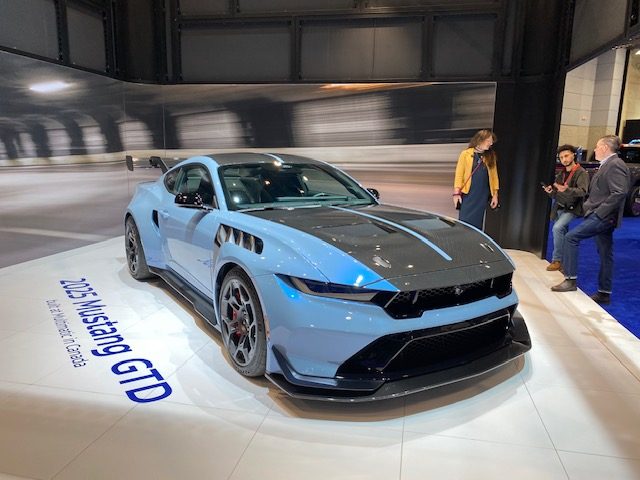
Fast and extraordinarily expensive. The GTD is built in Markham, Ontario
Ford introduced a hyper-performance version of the Mustang bearing the GTD moniker. The car is basically a bespoke creation that leaves the Flat Rock, Michigan assembly plant as a body-in-white and is shipped to suburban Toronto where GTD-specific body parts and mechanicals are fitted by Multimatic, the company that built the second-generation Ford GT. The exterior design displays a vast array of body piercings for cooling to mechanical and braking elements of the car. The rear of the GTD is adorned with a spoiler big enough to qualify for its own postal code. Power stems from a supercharged 5.2L-V8 rated at 815 horsepower, and flows to the rear wheels via an eight-speed dual-clutch automated manual transmission. Ford claims a top speed of 325 kilometers-per-hour and that the car is designed to lap the Nürburgring in less than seven minutes.
Orders are being taken now for the GTD, with an astronomical $440,000 price tag.
Subaru Forester Hybrid
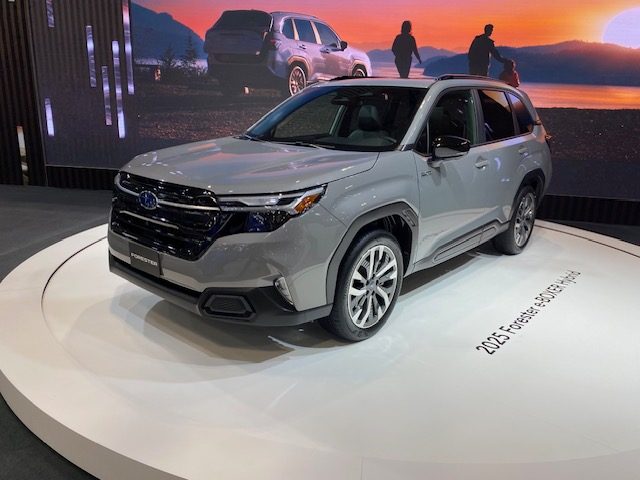
The Forester hybrid combines Subaru’s engine and drivetrain with the Toyota hybrid system
Subaru announced a hybrid version of its popular Forester crossover model. The hybrid employs Toyota’s hybrid system, with an electric motor generator and an electric traction motor that combine with Subaru’s flat-four engine to create 194 total system horsepower. A lithium-ion battery pack is employed in the new Forester Hybrid. No prices are available yet; deliveries are slated to start in spring.
Cadillac Sollei concept
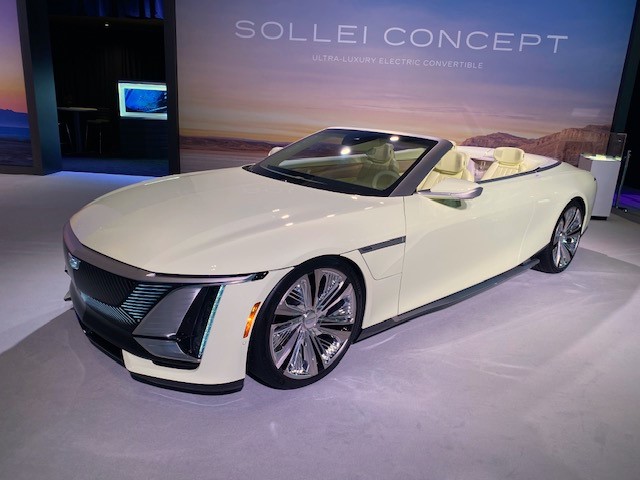
Arrestingly beautiful Cadillac Sollei concept
The Sollei is a cabriolet concept based on the underpinnings of Cadillac’s gigantic Celestiq hyper-luxury, electric hatchback. Like the Celestiq, the Sollei is built on GM’s Ultium EV platform.
The car is fronted by Cadillac’s complex frontal styling adopted for their electric vehicles but the rest of the body is arrestingly clean and taut. The dashboard comes from the Celestiq and the rest of the cabin is beyond sumptuous, with great lashings of Nappa leather and inlaid wood finishes.
If produced, the Sollei would be a “Halo” car for the Cadillac brand.
Cobble Beach Concours D’Elegance
Held north of Owen Sound, Ontario, the Cobble Beach Concours d’Elegance began in 2013 and has been held every year since, except for 2020 and 2021. Cobble Beach has sent a selection of cars that were at the last Concours for many years, and a variety of cars from featured marque, Mercedes-Benz were displayed at the 2025 CIAS. Here are three of the most interesting cars on display.
1935 130H
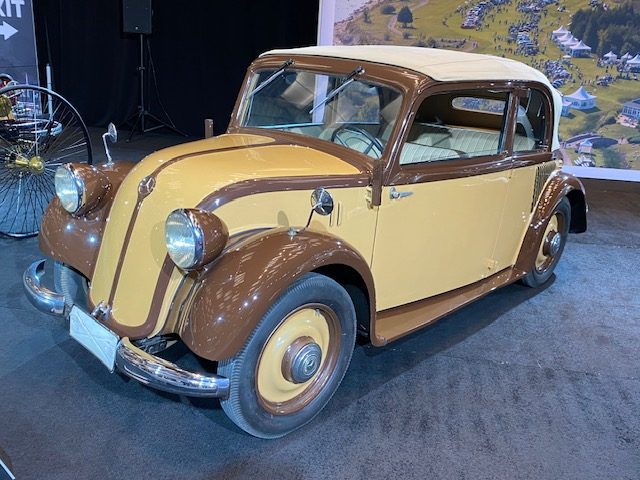
Petite rear-wheel drive Mercedes-Benz, the 130H
The smallest pre-war Mercedes-Benz, the 130H (H for heck, the German word for rear) was built on a tubular backbone frame with four-wheel independent suspension, transverse leaf at the front and a swing axle at the rear. The car was powered by a rear-mounted, 26 horsepower 1300cc water cooled four that sent power to the rear wheels via a synchronized manual transmission.
1938 540K
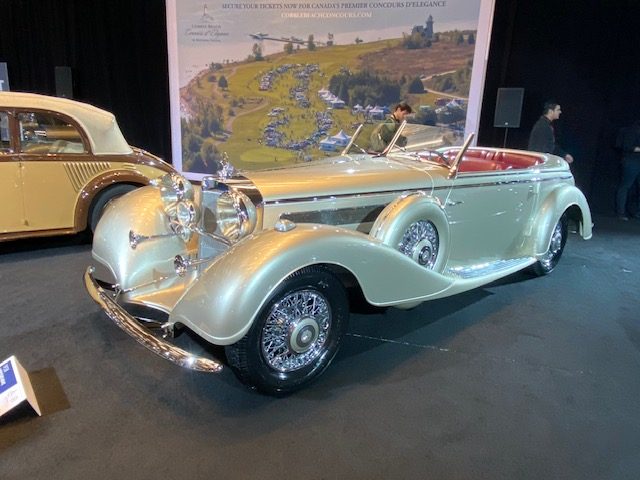
Rare and imposing Mercedes-Benz 540K
A follow up to the 500K of 1934, the 540K debuted in 1936. Power was derived from a 5.4L, supercharged straight eight engine that produced 115 horsepower most of the time but cranked out 180 horsepower when its supercharger, designed to be used in short bursts only, was engaged.
The straight eight is mounted in a chassis featuring all-independent suspension, double wishbones up front and a swing axle out back.
A wide variety of body styles were offered, with the majority of them, like this Sport Tourer, bodied by the Mercedes-Benz in-house coachbuilder, Sindelfingen.
1960 300 SL roadster
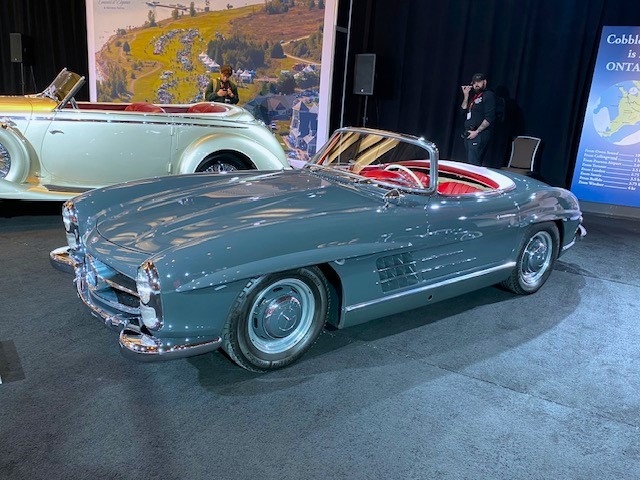
The 300 SL was a technical tour-de-force
The 300 SL roadster went on sale for 1957, three years after the iconic Gullwing coupe. The tubular steel framework of the coupe, which had gullwing doors, was modified to provide space for conventional doors and a roomier trunk. The main body was in steel but hinged panels were fashioned from aluminum.
Suspension was by wishbones upfront and a swing axle in back. Power stemmed from a 3L overhead cam inline six with mechanical fuel injection rated at 240 horsepower coupled to a four-speed manual transmission.
